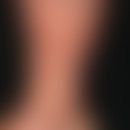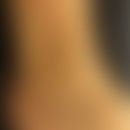Synonym(s)
HistoryThis section has been translated automatically.
DefinitionThis section has been translated automatically.
Eminently chronic, regularly recurring, thrombo-embolic occlusive disease of the cutaneous vascular plexus (see vasculopathy below), which clinically leads to a characteristic "livedo image" and, as a result of thrombotic vasculopathy of small and medium-sized skin vessels, to flashy, jagged, highly painful erosions or flat ulcers. Healing leaving flat, depigmented scars(atrophy blanche).
Brief clinical triad (LAU): Livedo racemosa, atrophieblanche, recurrent ulcers
You might also be interested in
Occurrence/EpidemiologyThis section has been translated automatically.
Incidence: < 1/100,000 (meets the criteria for orphan disease).
EtiopathogenesisThis section has been translated automatically.
The exact pathogenesis of livedovasculopathy has not yet been clarified. The skin becomes infarcted due to thrombosis in the vessels of the upper and medial dermis. This is probably the reason for the painful nature of the process (angina cutis).
Coagulation disorders such as antithrombin III, protein S and protein C deficiency are associated.
Idiopathic courses of the disease are often described.
Relationships to lupus erythematosus, polyarteritis nodosa, phospholipid antibody syndrome, coagulation disorders or hypercoagulability (genetic disposition is questionable: factor V Leiden mutation, prothrombin gene mutation), hyperhomocysteinemia; increased concentration of lipoprotein(a), cryofibrinogenemia, cold agglutinemia, venous insufficiency, chronic (CVI) have been described.
ManifestationThis section has been translated automatically.
Predominantly occurring in adolescents and younger adults (15-40 years of age). The age structure varies according to ethnicity. The disease predominantly affects females (70-80%).
ClinicThis section has been translated automatically.
Reticular, rich red, livid, flat, indurated plaques and erythema, with the formation of bizarre, usually very painful (it is not the livedo picture but the stabbing permanent pain that leads to the doctor!), therapy-resistant flat ulcers in the ankle area, preferably in the summer months (summer ulcerations), but also occurring all year round, which heal with 0.3-1.0 cm large, flat sunken, splatter-like whitish scars with a red accentuated border (vascular ectasia) (atrophie blanche). Symmetrical occurrence on the lower extremities is described but is not the rule. The areas surrounding the ulcers show a typical livedo picture with bizarre erythema. Livedo racemosa is not only seen periulcerously but also on the arms, thighs and upper body. Both livedo racemosa and atrophy blanche are typical but not pathognomonic for livedovasculopathy, as these signs can also occur in other diseases (Ronicke M et al. 2024).
LaboratoryThis section has been translated automatically.
Environmental analysis often reveals pathological coagulation parameters with porthrombotic properties such as: antiphospholipid antibodies and protein C deficiency.
HistologyThis section has been translated automatically.
Notice. The biopsy must be performed at an early stage. It must cover the lesional area sufficiently deeply and broadly (transition from healthy to diseased) so that the triggering vascular problem can be reliably assessed in the incision. Step cuts are mandatory!
Atrophic epithelium. In the middle and deep layers of the dermis, rather sparse, perivascular, lymphocytic infiltrate as well as dilated vessels, partly bulging with erythrocytes or filled with various old, hyaline thrombi (almost obligatory phenomenon). These fibrinoid effusions lead to hyalinization and infarction of the vessel wall, with subsequent focal necrobiosis and necrosis.
No signs of leukocytoclastic vasculitis!
Direct ImmunofluorescenceThis section has been translated automatically.
Differential diagnosisThis section has been translated automatically.
Clinical differential diagnosis:
- Poly-(peri-)arteritis nodosa: 1.0 - 5.0 cm large, initially coarse, usually very pressure-dolent, also spontaneously painful, reddish to livid-colored plaques or nodules (iceberg phenomenon) with a tendency to painful ulceration. Histologically, the process with clear inflammatory symptoms is located at the cutis-subcutis border! A flash-like livedo image may be part of the clinical symptoms.
- Sneddon syndrome: In this case, the skin process is characterized by systemic changes (occlusion of cerebral vessels with neurological deficits). Systemic changes are always absent in livedovasculopathy! Phospholipid antibodies are detectable in more than 50% of patients!
- Embolia cutis medicamentosa: Acute event, occurring minutes to a few hours after an i.m. injection. (medical history leads to a diagnosis of exclusion!), painful, board-hard infiltration with lightning-figure-like skin pattern. Secondary: development of deep ulcerations which heal with bizarrely shaped atrophic scars.
- Arteriosclerotic occlusive ulcers (see hypertonic leg ulcer below): Not uncommonly grafting onto the clinical picture of livedo racemosa (here underlying arteriolosclerosis), sudden (overnight) formation of hemorrhagic, jagged, very painful ulcers. Always evidence of peripheral AVK (exclusion of livedovasculopathy). Comorbidities include obesity, diabetes mellitus, coronary heart disease.
- Calciphylaxis: Localized, mostly symmetrical picture of the racemic (lightning-figure-like) livedo; this is accompanied by linear or also flat, 2.0 to 20 cm large, eminently painful, hard, red or also skin-colored plaques or nodules. Usually also painful ulcers of various sizes (histology is diagnostic, see below).
- Livedo reticularis (referred to as livedo racemosa in Anglo-American usage!): This functional disorder is best described by the term "cutis marmorata". It is characterized by a cold-induced, large-meshed livid marbling which, depending on the form, disappears or appears after warming or cooling. Frequent peripheral acrocyanosis. The jagged "lightning-figure-like" pattern of the livedo racemosa is always absent (exclusion phenomenon). Pain is always absent (exclusion of livedovasculopathy).
- Cutis marmorata teleangiectatica congenita: Congenital clinical picture (exclusion criterion) with asymmetrically distributed cutis marmorata with telangiectasia and phlebectasia; often conspicuously thin, translucent (atrophic) skin with distinct vein pattern.
- Atrophie blanche: Always due to chronic venous insufficiency (exclusion criterion). Splatter-like, slightly sunken, scarred areas with surrounding brown pigmentation. Capillary ectasia usually detectable at the edges. Possible formation of mostly small, more rarely also superficial erosions or ulcers covering the entire atrophy zone ( atrophy blanche ulcer). The clinical peculiarity of these ulcers is a stabbing permanent pain that is not compatible with the size of the ulcer.
Histologic differential diagnosis:
- Calciphylaxis: Thrombosed dermal and subcutaneous vessels with pronounced basophilic calcifications in the lumen and walls (exclusion phenomenon).
- Dermatoliposclerosis (congestive dermatosis): Intralobular lipomembranous (membranocytic) fat necrosis and marked septal sclerosis. In the advanced stage of dermatoliposclerosis, broad sclerosed septa with narrow wall-thickened capillaries and venules with PAS-positive perivascular fibrin sheaths, macrophages and fibroblasts are found. In the dermis: perivascular superficial and deep sclerosing dermatitis with wall-thickened, glomerularly bulging vessels.
- Leukocytoclastic vasculitis: Vascular wall necrosis with fibrinoid vessel wall swelling, neutrophil infiltration and perivascular nuclear dust.
- Thrombophlebitis migrans: Sclerosing endophlebitis (giant cell vasculitis) with complete or partial occlusion of the vascular lumina by thrombi. Frequent detection of giant cells.
TherapyThis section has been translated automatically.
General therapyThis section has been translated automatically.
External therapyThis section has been translated automatically.
Internal therapyThis section has been translated automatically.
Current treatment paradigms are based on a small evidence base, mainly on case reports and case series of low evidence (Micieli R et al. 2018). In a major review (Micieli R et al. 2018), the following ranking (by frequency of therapies mentioned) was established:
Anticoagulants were the most commonly used monotherapy and achieved a favorable response in 62 of 63 patients (98%) (Weishaupt C et al 2019).
Anabolic steroids, intravenous immunoglobulins (IVIG), and antiplatelet agents were the second, third, and fourth most commonly used therapies, respectively. The following is a priority list based on my own experience (author of this article)!
- IVIG: According to my own experience, which has been confirmed in the meantime, prompt and long-term improvements (especially in the almost always present severe pain symptoms!) can be achieved under repetitive (4 week intervals) immunoadsorption and/or IVIG alone (high-dose immunoglobulin therapy: 0.5-1.0g-2.0/kgKG divided into 3 consecutive days i.v.).
- Alternative: Heparin 2-3 times/day 5000-7500 IU s.c.
- Alternative: Enoxaparin (Clexane®) 1 mg/kg bw/day. Duration of therapy adapted to symptoms, usually for about 4 weeks.
- Alternative: Rivarobaxan (Xarelto®), initially 2 x 10 mg/day p.o. Symptom-adapted therapy with 1x10 mg/day p.o.
- Alternative prednisolone/azathioprine: If there is no convincing improvement of the disease with these therapy regimens, immunosuppressive therapy with prednisolone (e.g. Decortin H) 100 mg/day p.o. can be started. Reduce steroid dose depending on clinic, maintenance dose of 5-10 mg/day. Combination therapy with azathioprine (e.g. Imurek®) 100 mg/day p.o. is recommended.
Not very convincing and not recommended:
- Acetylsalicylic acid (e.g. ASS-ratiopharm) 2 times/day 500 mg p.o., also in combination with dipyridamole (e.g. Curantyl 3-5 times/day 1 drg. p.o.).
- Sulfasalazine (e.g. azulfidine): dose gradually up to 1000 mg p.o. 3 times/day.
Note(s)This section has been translated automatically.
- The disease fulfils the criteria of an "orphan disease". This must be taken into account in all therapeutic modalities. See below Orphan Diseases, see below. Orphan drugs.
- Randomised clinical trials are required to better establish these treatments in clinical practice.
Case report(s)This section has been translated automatically.
- A 24-year-old, obese female patient has been suffering from extremely painful "open sores" on the ankle regions of both feet periodically since the age of 12, especially in the summer months. These would heal after a few weeks with scarring. Treatment over the years was antibiotic and immunosuppressive (azathioprine and glucocorticoids in medium doses), with no demonstrable improvement in the findings. Apart from that, symptomatic pain therapy with metamizole and aspirin was carried out. The presentation of the patient was pain-driven.
- Findings: On all ankles there are irregular, red-brown, only moderately indurated plaques up to 8x8 cm in size, which are interspersed with smaller (about 0.5-1.0 cm in size) whitish, bizarrely configured scarred depressions. These are accentuated reddened in their marginal area. In places, livedo patterns are detectable at the edges. There are also highly painful red erosions measuring 0.2-0.6 cm with and without crusts.
- Histology: In the middle and deep layers of the dermis sparse, perivascular, lymphocytic infiltrate as well as dilated vessels, partly bulging with erythrocytes, partly characterized by hyaline effusions (almost obligatory phenomenon). Clearly thickened vessel walls. No signs of leukocytoclastic vasculitis.
- Other findings: No evidence of AVK or CVI. Laboratory: completely o.B.
- Therapy: Consistent therapy with a low molecular weight heparin (Enoxaprin = Clexane; 1mg/kgKG/day s.c.). Significant reduction in pain within 10 days and healing of the erosions without complications under the usual indifferent wound management). No new erosive foci in the meantime. Enoxaprine therapy was discontinued after 4 weeks.
LiteratureThis section has been translated automatically.
- Calamia KT et al. (2002) Livedo (livedoid) vasculitis and the factor V Leiden mutation: additional evidence for abnormal coagulation. J Am Acad Dermatol 46:133-137
- Feldacker M, Hines EA, Kierland RR (1955) Livedo reticularis with summer ulcerations. Arch Derm Syph 72: 31-37
- Fritsch P et al (1995) Livedo vasculititis. Dermatologist 46: 215-224
- Goerge T (2010) Low-molecular-weight heparin therapy for the treatment of livedovasculopathy. Act DErmatol 36: 484-487
- Goerge T (2014) Vasculopathy and vasculitis. Act Dermatol 40: 519-522
- Hairston BR et al (2006) Livedoid vasculopathy. Arch Dermatol 142: 1413-1418
- Kerk N et al (2013) Livedoid vasculopathy - athrombotic disease. Vasa 42: 317-322
- Kreuter A et al. (2004) Pulsed intravenous immunoglobulin therapy in livedoid vasculitis.: an open trial evaluating 9 consecutive patients. J Am Acad Dermatol 51:574-579
- Micieli R et al. (2018) Treatment for Livedoid Vasculopathy: A Systematic Review. JAMA Dermatol 154:193-202.
- Monshi B et al. (2014) Efficacy of intravenous immunoglobulins in livedoid vasculopathy: long-term follow-up of 11 patients. J Am Acad Dermatol 71:738-744
- Müller CSL et al. (2016) Diagnostic and histologic features of cutaneous vasculitides/vasculopathies. Act Dermatol 42: 286-301
- O'Leary PA, Montgomery H, Brunsting LA (1944) Livedo reticularis: recurrent ulcerations of the ankles in the summer. Arch Dermat Syph 50: 213
- Ronicke M et al. (2024)* Occlusive cutaneous vasculopathies as cause of chronic ulcers. J Dtsch Dermatol Ges 22:553-567.
- Sams WM (1988) Livedo vasculitis. Therapy with pentoxifylline. Arch Dermatol 124: 684-687
- Schanz S et al. (2003) Intravenous immunoglobulin in livedo vasculitis: a new treatment option? J Am Acad Dermatol 49: 555-556
Weishaupt C et al.(2019) Characteristics, risk factors and treatment reality in livedoid vasculopathy - a multicentre analysis. J Eur Acad Dermatol Venereol 33:1784-1791.
Outgoing links (36)
Acetylsalicylic acid; Antiphospholipid antibodies; Antiphospholipid syndrome; Antithrombin-iii; Atrophie blanche; Atrophy blanche ulcer; Calciphylaxis; Chronic venous insufficiency (overview); Cold agglutinins; Cryofibrinogenesis; ... Show allDisclaimer
Please ask your physician for a reliable diagnosis. This website is only meant as a reference.















